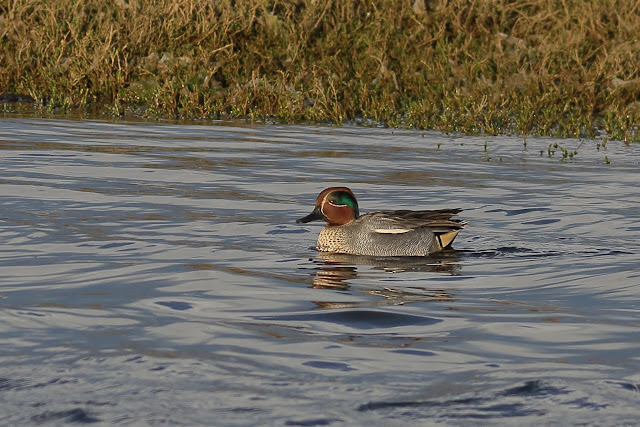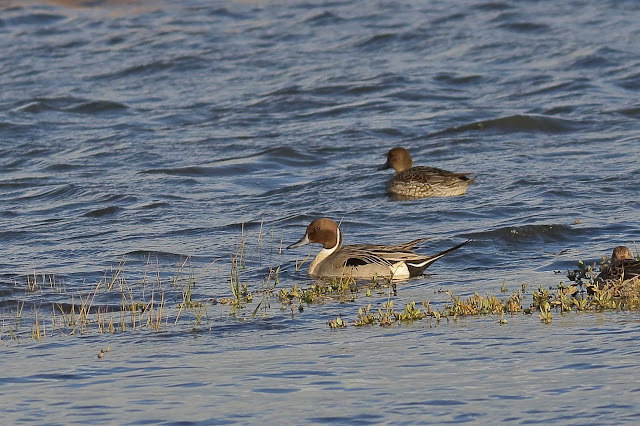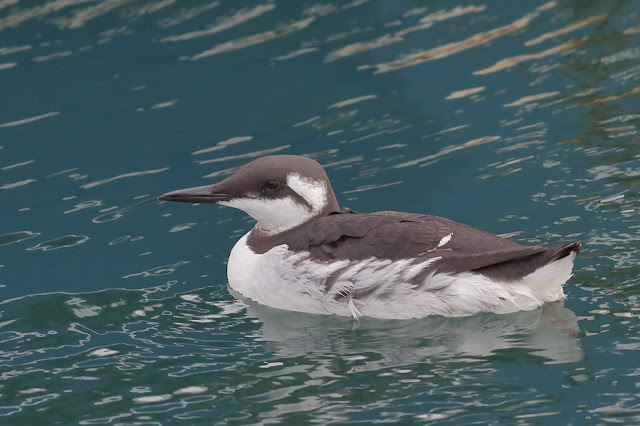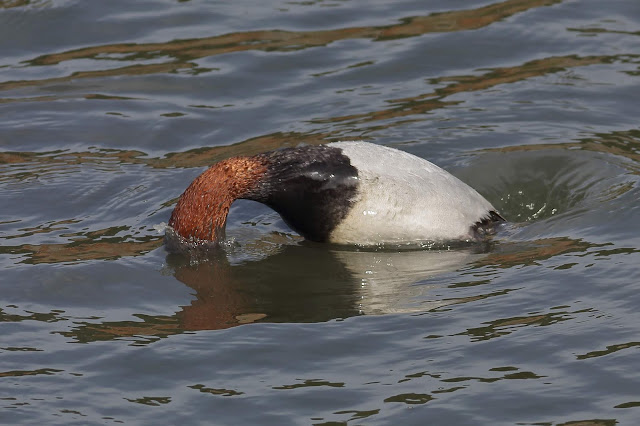Hi again.
En el siguiente enlace podéis ver nuestros próximos viajes fotográficos y de observación de aves y mamíferos nacionales y al extranjero. Espero que os gusten y os animéis a venir conmigo. Una experiencia que nunca olvidareis.
In the following link you can see our next national and foreign Birds and Mammals photographic and observation trips. I hope you like them and I encourage you to come with me. An experience that you will not forget.
Esta semana os muestro algunas de las aves que pudimos ver en nuestro viaje organizado de dos días a Santoña y Bahía de Santander a principio de marzo.
This week I show you some of the Birds we could see on our scheduled two-day trip to Santoña and Santander Bay in early March.
Aunque las previsiones meteorológicas eran muy malas al final no nos llovió y disfrutamos de dos días viendo las aves en este entorno tan maravilloso.
Although the weather forecast was very bad, at the end it did not rain and we enjoyed two days watching Birds in this wonderful environment.
Lo primero que visitamos fue la ermita de Nuestra Señora de la mar pues este año pasaron el invierno algunos escribanos nivales (Plectrophenax
nivalis) pero ya se habían ido. De todos modos mereció la pena la visita pues el lugar es precioso.
The first thing we visited was the hermitage of Nuestra Señora del Mar, as some Snow
Buntings spent in winter this year but they had already left. Anyway it was worth the visit because the place is beautiful.
Una pena que el día no estuviese sin nubes.
A pity that the day was not cloudless.
Había bastantes lavanderas blancas (Motacilla
alba) pero a mi se me fue la vista con las lavanderas enlutadas (Motacilla alba yarrelli) que es una subespecie de la blanca y que tiene su origen en Inglaterra.
There were quite a few White Wagtails but I was out of sight with the Pied Wagtails which is a subspecies of White Wagtail and has its origin in England.
También había algunas bisbitas pratenses (Anthus
pratensis).
There were also some Meadow
Pipits.
Y algunos colirrojos tizones (Phoenicurus
ochruros). En la foto un macho.
And some Black
Redstart. In the photo a male.
Luego nos trasladamos a la Bahía de Santander. El tiempo estaba muy oscuro para sacarle una foto y esta es del año pasado. Menuda diferencia.
Then we went to Santander Bay. The time was very dark to take a photo of it and this is from last year. What a difference.
Por allí pudimos ver algunos vuelvepiedras comunes (Arenaria
interpres).
There we could watch some Turnstone.
Somormujo lavanco (Podiceps
cristatus).
Great
Crested Grebe.
Este fue el colimbo grande (Gavia immer) que más cerca tuvimos en los dos días.
This was the closest Great
Northern Diver that we had in both days.
Cormorán grande (Phalacrocorax
carbo).
Great
Cormorant.
Charrán patinegro (Thalasseus
sandvicensis).
Sandwich
Tern.
Y antes de irnos hacia Santoña para pasar la noche esta gaviota cabecinegra (Larus melanocephalus) pasó por donde estábamos.
And before leaving for Santoña to spend the night this Mediterranean
Gull flew over us.
Por la mañana temprano este era el aspecto que tenía la ría desde Colindres. Amenazaba agua pero al final no llovió.
In the early morning this was what the estuary looked like from Colindres. It was threatening water but the end it did not rain.
Había bastantes chorlitos grises (Pluvialis
squatarola).
There were quite a few Gray Plovers.
La especie más abundante eran los correlimos comunes (Calidris
alpina).
The most abundant species were the Dunlin.
Además de las dos especies antes mencionadas en esta foto se pueden ver tres agujas colipintas (Limosa
lapponica).
In addition to the two species mentioned above in this photo you can see three Bar-tailed
Godwit.
En los flancos dos zarapitos reales (Numenius
arquata).
On the flanks two Eurasian Curlew.
Otro zarapito real (Numenius arquata).
Another Eurasian Curlew.
En esta foto el ave que está entre los chorlitos grises (Pluvialis
squatarola) es una aguja colipinta (Limosa
lapponica).
In this photo the bird that is among the Gray Plovers is a Bar-tailed
Godwit.
Había menos anátidas que otros años. En la foto un bonito macho de cerceta común (Anas
crecca).
There were fewer ducks than other years. In the photo a nice male of Common Teal.
Una pareja de silbones europeos (Anas penelope).
A pair of Eurasian
Wigeon.
Un macho de ánade azulón (Anas
platyrhynchos).
A Mallard male.
Y no podían faltar los bonitos ánades rabudos (Anas
acuta).
And it could not miss the beautiful Northern Pintails.
Como de costumbre entre las aves, los machos más coloridos que las hembras.
As usual among Birds, males are more colorful than females.
Había algunos archibebes claros (Tringa nebularia).
There were some Greenshank.
Estornino pinto (Sturnus vulgaris).
Common Starling.
Chorlitejo grande (Charadrius
hiaticula).
Great
Ringed Plover.
Pudimos encontrar bastante lejos a dos colimbos chicos (Gavia stellata).
We could spot two Red-throated
Diver far away.
Los cormoranes grandes (Phalacrocorax
carbo) ya estaban en plumaje nupcial.
Great
Cormorant were already in breeding plumage.
Al igual que las gaviotas reidoras (Chroicocephalus
ridibundus ).
As same as Black-headed
Gull.
Pudimos observar bastantes cormoranes moñudos (Phalacrocorax
aristotelis).
We were able to observe quite a few European Shag.
Es impresionante poder oír el ruido que hacen con sus alas los cisnes vulgares (Cygnus
olor) cuando pasan volando por encima tuyo.
It is awesome to be able to hear the noise that the Mute Swans make with their wings when they fly above you.
Aun había muchas barnaclas carinegras (Branta
bernicla).
There were still many Brent Geese.
En el puerto de Santoña estaba este confiado arao común (Uria
Aalge).
At Santoña's port we find this trusted Common Guillemot.
Como es habitual abundaban las gaviotas patiamarillas (Larus
michahellis).
As usual Yellow-legged Gulls were abundant.
Solo vimos unos pocos charranes patinegros (Thalasseus
sandvicensis).
We only saw a few Sandwich
Terns.
También pudimos observar algunos ejemplares de gavión atlántico (Larus marinus).
We were also able to observe some specimens of Great black-backed
Gulls.
Siempre me llama la atención su gran tamaño.
I am always struck by its large size.
Como de costumbre había muchas fochas comunes (Fulica
atra).
As usual there were many Common Coots.
Aún seguía vivo este ejemplar con leucismo parcial que vi por primera vez el año pasado. No es raro que estos ejemplares vivan menos que los normales pues al ser blancos son más fáciles de depredar pues se ven más.
This specimen with partial leucism that I saw for the first time last year was still alive. It is not unusual for these specimens to live less than the normal ones, since being white they are easier to prey because they are easier seen.
Una hembra de martín pescador común (Alcedo
atthis) estaba haciendo lo que mejor sabe hacer, pescar.
A female Common Kingfisher (Alcedo atthis) was doing what she does best, fishing.
Una buena captura.
A good catch.
Este ejemplar juvenil de espátula común (Platalea
leucorodia) pasó volando muy cerca nuestro.
This juvenile Eurasian
Spoonbill flew close to us.
Un grupo descansando.
A sleeping flock.
Andarríos chico (Actitis
hypoleucos).
Common
Sandpiper.
Ningún somormujo lavanco (Podiceps
cristatus) quiso acercarse más a nosotros para sacarle una buena foto. Es una pena pues son muy bonitos.
No Great Crested Grebe wanted to get closer to us to take it a good photo. It is a shame because they are very beautiful.
Zampullín común (Tachybaptus
ruficollis) con sus mejores galas.
Little
Grebe in its best clothes.
Había un grupo de gaviotas cabecinegras (Larus
melanocephalus) entre las gaviotas reidoras (Chroicocephalus
ridibundus).
There was a group of Mediterranean Gulls among the Black-headed Gulls.
Aquí os dejo un pequeño vídeo de las gaviotas cabecinegras (Larus melanocephalus).
Here I load for you a small video of the Mediterranean Gulls.
Había bastantes porrones europeos (Aythya
ferina). En la foto un macho.
There were quite a few Common
Pochard. In the photo of a male.
Me encanta ver cuando se zambullen.
I love to see when they dive.
Y esta una hembra.
And this one a female.
Solo había una hembra de porrón moñudo (Aythya
fuligula).
There was only a Tufted Duck female.
Un macho y dos hembras de cuchara común (Espatula
clypeata).
A male and two female Northern
Shoveler.
Otros años había muchos ánades frisos (Anas
strepera). Sin embargo este había muy pocos. En la foto una hembra.
Other years there were many Gadwalls. However this there were very few. In the photo a female.
Garceta común (Egretta
garzetta).
Little
Egret.
Por la mañana había un grupo de 10 cisnes vulgares (Cygnus
olor).
In the morning there was a group of 10 Mute Swans.
Cuando ya veníamos de vuelta hacia Madrid decidimos pasar por las marismas de la ría de Boó. El primer personaje que vimos fue a este descarado petirrojo europeo (Erithacus
rubecula).
When we were coming back to Madrid we decided to go through the marshes of the Boó estuary. The first Bird we saw was this cheeky European Robin.
Había varias espátulas comunes (Platalea
leucorodia).
There were several Eurasian
Spoonbill.
Una bonita garza real (Ardea
cinerea).
A beautiful Grey
Heron.
Y bastantes agujas colinegras (Limosa
limosa).
And quite a few Black-tailed
Godwit.
Un par de ellas estaban ya bastante bonitas.
Two of them were already quite beautiful.
Espero que os haya gustado. Hasta pronto.
I hope you liked it. See you soon.





















































































No hay comentarios:
Publicar un comentario